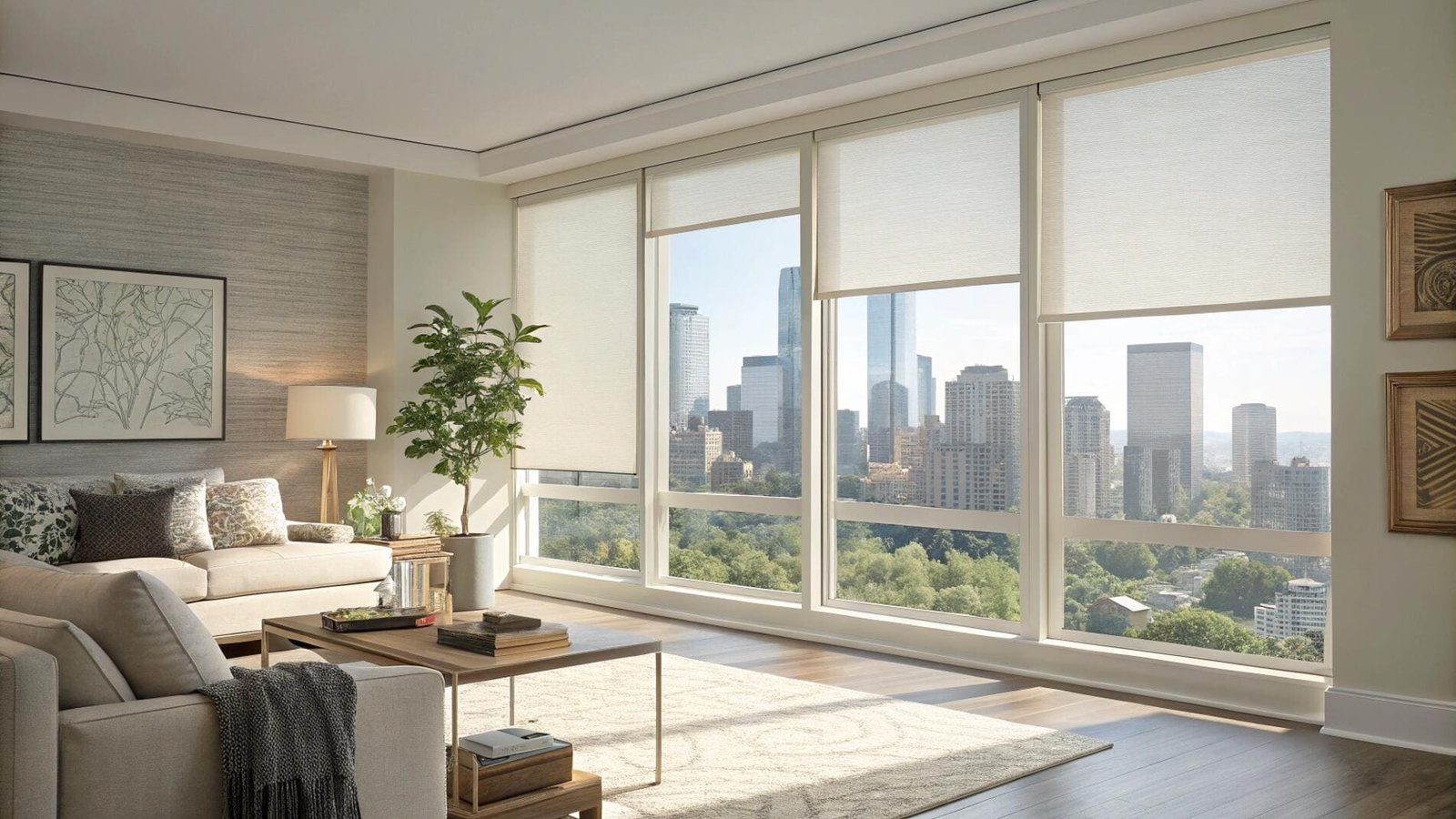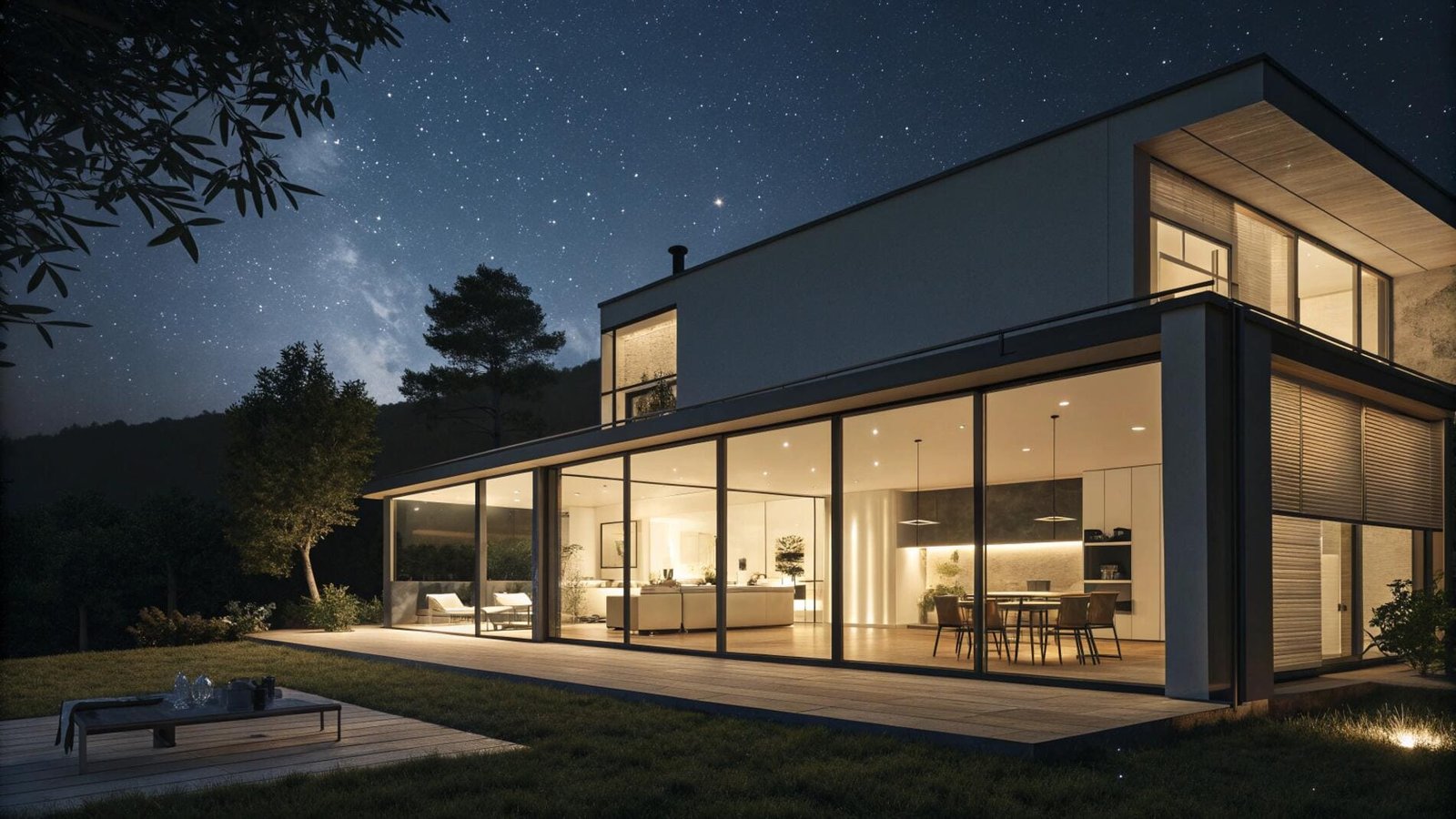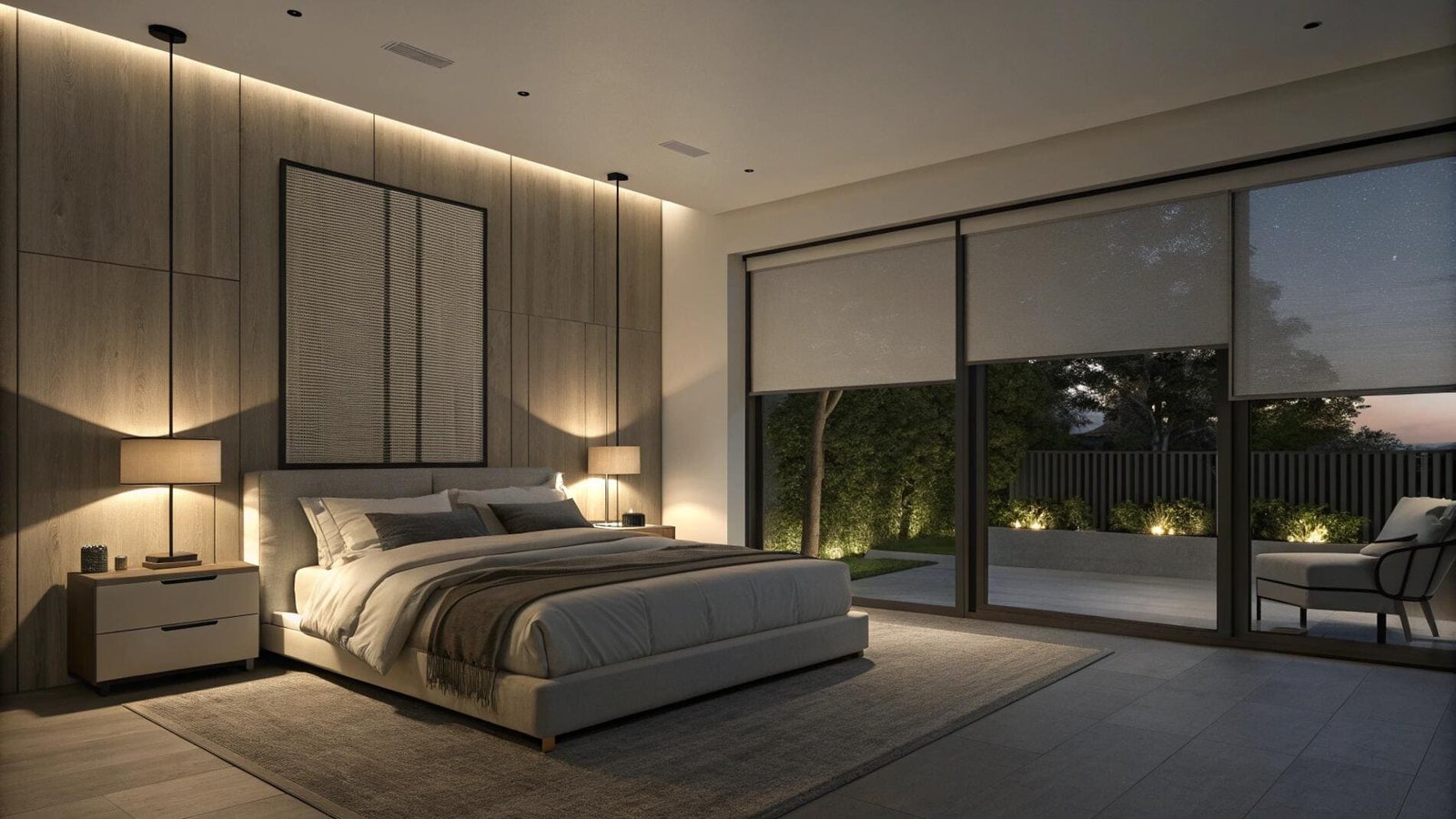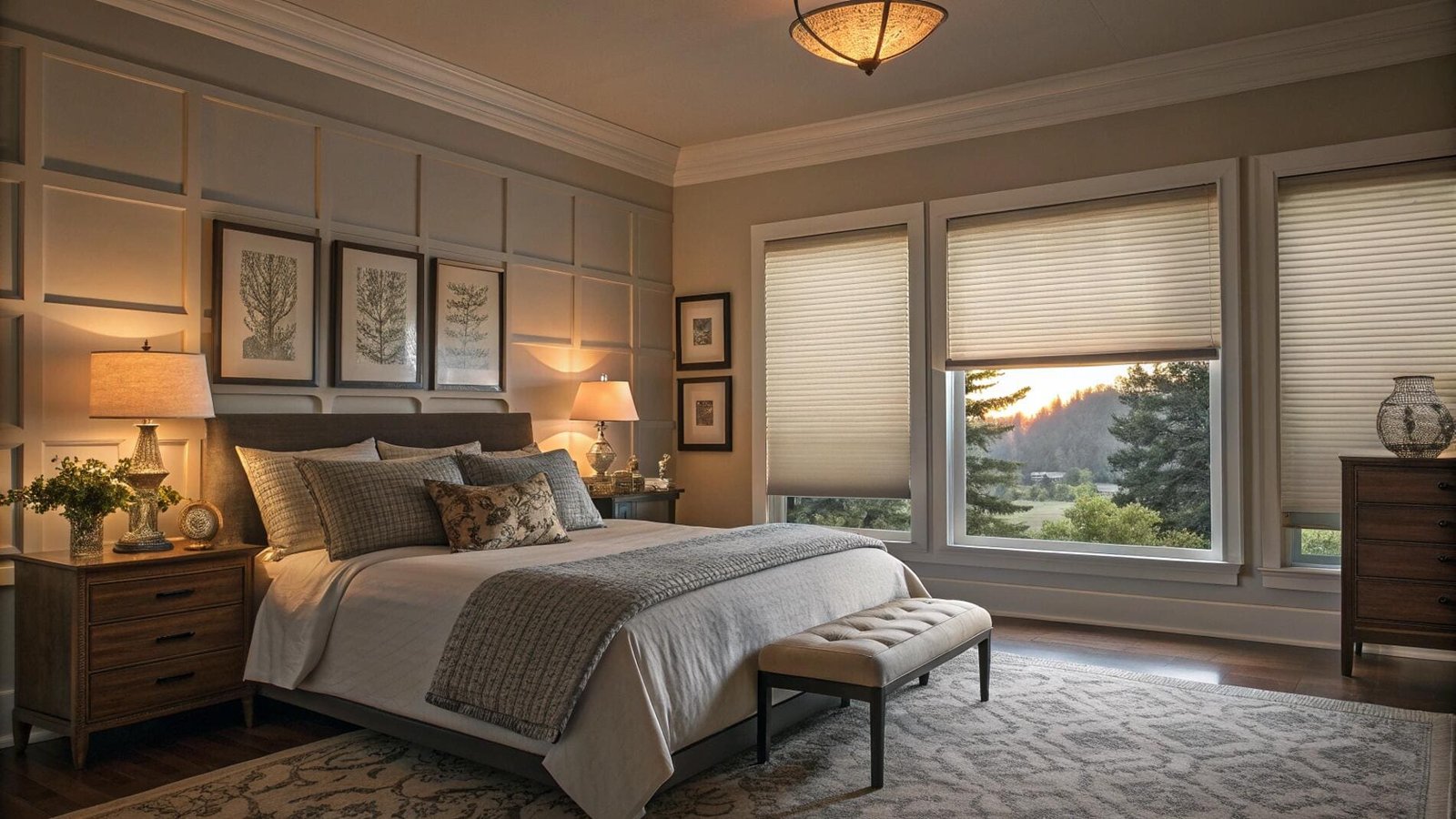Your clients want that perfect window treatment: one that preserves their stunning view but stops nosy neighbors from looking in. You’ve seen products that claim one-way vision, but you're not sure if it's a gimmick.
During the daytime, solar shades are the best option to see out while preventing others from seeing in. However, this effect reverses at night. For 24/hour privacy, you need an opaque blind like a blackout shade[^1] or a dual-roller system[^2].

This is probably the most common request I get from designers and project managers. The desire for both a view and privacy is universal, but how to achieve it isn't always clear. The truth is, the "magic" one-way effect is based on a simple principle of light, and it only works under certain conditions. Once you understand why, you can choose the right product and avoid unhappy clients who feel exposed in their own homes after sunset. Let's explore how these blinds work and which solutions offer genuine privacy, day and night.
Are there blinds where you can see out but others can't see in?
You're trying to find a single blind that delivers on the promise of one-way vision[^3]. You need a reliable solution that gives your clients a clear view of the outside without making them feel like they're on display.
Yes, solar shades and other screen fabrics[^4] create a one-way-vision effect during the daytime. The key is that the area outside must be significantly brighter than the area inside for the effect to work properly.

The one-way effect is all about the balance of light. When it's bright outside and dimmer inside, your eye is naturally drawn to the brighter exterior view through the weave of the fabric. From the outside, however, the light hitting the shade is so intense that it reflects off the surface, making it look opaque and obscuring the view into the darker interior. I always advise clients like Emma to think of it less as a "magic mirror" and more as a light filter. The tighter the weave (a lower openness factor, like 1% or 3%), the less you can see in or out, but the privacy effect is still dependent on the light difference. Fabric color also plays a role: dark colors provide a crisper view to the outside, while light colors are better at reflecting heat but can wash out the view.
Why does the one-way effect disappear at night?
Your client was thrilled with their new solar shades[^5] during the day. But now they've called you in a panic because, after dark, they feel like the whole neighborhood can see right into their living room.
The one-way effect reverses at night because the lighting conditions flip. When you turn on your lights, your home's interior becomes much brighter than the dark outside, making the shades transparent from the street.

This is the "fishbowl effect[^6]," and it's the biggest drawback of relying solely on solar shades for privacy. The rule of thumb is simple: you can always see from a darker space into a brighter space through a screen. During the day, the outside world is the bright space. At night, your lit-up home becomes the bright space, and the dark street outside is where the viewer is. The shade, which felt private hours earlier, now does nothing to stop the view inward. In fact, it can make it worse. From the inside, the shade becomes a dark, reflective surface, so you can't even see out to know if someone is looking in. This is a critical point to communicate for any project involving bedrooms, bathrooms, or ground-floor windows.
Do zebra blinds give you privacy?
You've seen zebra blinds[^7] proposed as a modern, stylish alternative. Their unique design seems to offer flexibility, but you need to know if they provide the solid nighttime privacy your residential clients demand.
Zebra blinds offer adjustable light control[^8] but are not a true privacy solution. At night, with the lights on, shapes and silhouettes can still be visible from the outside, even when the solid bands are aligned.

I often get asked about zebra blinds. They are visually interesting and great for dialing in the perfect amount of natural light during the day. By adjusting the alternating bands of sheer and solid-colored fabric, a user can go from a filtered view to a more light-blocking state. However, it's crucial to understand that "light-blocking" is not the same as "privacy-providing." The "solid" fabric on most zebra blinds is still quite thin and not fully opaque. At night, the light from inside your home will bleed through, revealing movement and general shapes to anyone outside. For a living room where some translucency is acceptable, they can be a great choice. But for a bedroom or bathroom, they simply don't offer the complete visual block that ensures peace of mind.
Which blinds provide the most privacy?
Knowing that solar and zebra blinds fall short at night, you need to know what to specify for spaces where total privacy is non-negotiable. Your clients want to feel secure in their homes after dark.
For the most privacy, you need blinds made from completely opaque materials[^9]. Blackout roller shades, honeycomb (cellular) shades, and high-quality Roman shades with a blackout liner are the best options for blocking all light and visibility.

When a project demands 100% privacy, I recommend one of these three solutions. Each offers a different combination of benefits beyond just blocking the view.
| Blind Type | Key Benefit | Ideal For |
|---|---|---|
| Blackout Roller Shades | Sleek, modern, and effective | Any room needing total darkness and a clean look. |
| Honeycomb (Cellular) Shades | Excellent insulation and sound dampening | Bedrooms and homes in climates with hot summers or cold winters. |
| Shangri-La (Silhouette) Shades | Elegant light diffusion and privacy | High-end living spaces where aesthetics and flexible control are key. |
Honeycomb shades are a personal favorite for energy-conscious projects. Their cellular structure traps air, creating a natural insulating barrier that helps lower energy bills. Shangri-La shades[^10] offer a unique, high-end solution by suspending fabric vanes between two sheer layers. This allows a client to tilt the vanes to control light or close them completely for privacy, all within one beautiful shade.
What is the best day-to-night solution?
Your client loves the idea of a daytime view but needs guaranteed nighttime privacy. Installing two separate sets of blinds seems clunky, and you're looking for an integrated, elegant solution.
The best day-to-night solution is a dual-roller shade system. This combines a view-preserving[^11] solar shade and a privacy-providing blackout shade into a single, compact cassette, offering 24-hour flexibility.

For projects that require the best of both worlds, I always recommend a dual-roller system. It is the smartest and most complete shading solution on the market. During the day, the client can lower the solar shade to cut glare, block UV rays, and enjoy their view. At night, with the press of a button, the solar shade retracts and a second, fully opaque blackout shade lowers in its place, providing 100% privacy and room darkening. This entire system is housed in one sleek cassette, so there's no need for bulky double brackets or separate curtain rods. It’s an elegant and highly functional solution that solves the one-way-vision problem without compromise, significantly raising the perceived value of any residential or commercial project.
Conclusion
To see out but not in, use solar shades by day and an opaque blackout shade by night. A dual-roller system is the most seamless and modern way to achieve both view and privacy in a single window.
---
[^1]: Discover the advantages of blackout shades for complete privacy and light control, perfect for bedrooms and sensitive spaces.
[^2]: Find out how a dual-roller system combines solar and blackout shades for ultimate flexibility in light control and privacy.
[^3]: Learn about the concept of one-way vision and how it can enhance privacy without sacrificing your view.
[^4]: Understand how screen fabrics can create a one-way vision effect during the day, enhancing your home's privacy.
[^5]: Explore how solar shades can provide daytime privacy while preserving your view, making them a popular choice for modern homes.
[^6]: Learn about the fishbowl effect and how to avoid it for better nighttime privacy in your living spaces.
[^7]: Understand the limitations of zebra blinds for nighttime privacy and explore better alternatives for your home.
[^8]: Find out how different window treatments can help you manage light levels in your home for comfort and ambiance.
[^9]: Discover the importance of opaque materials in window treatments for achieving complete privacy and light blockage.
[^10]: Learn about the elegant design of Shangri-La shades that offers both light diffusion and privacy in high-end spaces.
[^11]: Learn about window treatments designed to maintain your view while providing necessary privacy during the day.Partner with VelaBlinds for Your Next Project
Smart window treatments shouldn't be complicated. After working with 500+ distributors and contractors worldwide, I've streamlined the process to get you quality products, competitive pricing, and reliable support - every time.
Why project professionals choose VelaBlinds:
- ✅ Fast, Accurate Quotes - Detailed specs and pricing within 24 hours
- ✅ Transparent Pricing - No hidden fees, volume discounts clearly outlined
- ✅ Quality Assurance - Direct partnerships with certified OEM manufacturers
- ✅ Project Support - Dedicated account manager from quote to delivery
Start your next project:
📧 Quick Quote: Send your requirements to info@velablinds.com
📱 Direct Contact: WhatsApp +86 137 2012 8317
🌐 Browse Solutions: https://velablinds.com/
📁 Product Resources: Access spec sheets, catalogs & project files
Paul Chen, Founder
"I built VelaBlinds to solve the real challenges I faced as a project buyer - long lead times, unclear specs, and unreliable suppliers. Let's discuss how we can power your projects with smarter blinds."
Serving distributors and contractors across North America, Europe, and Australia since 2018.




